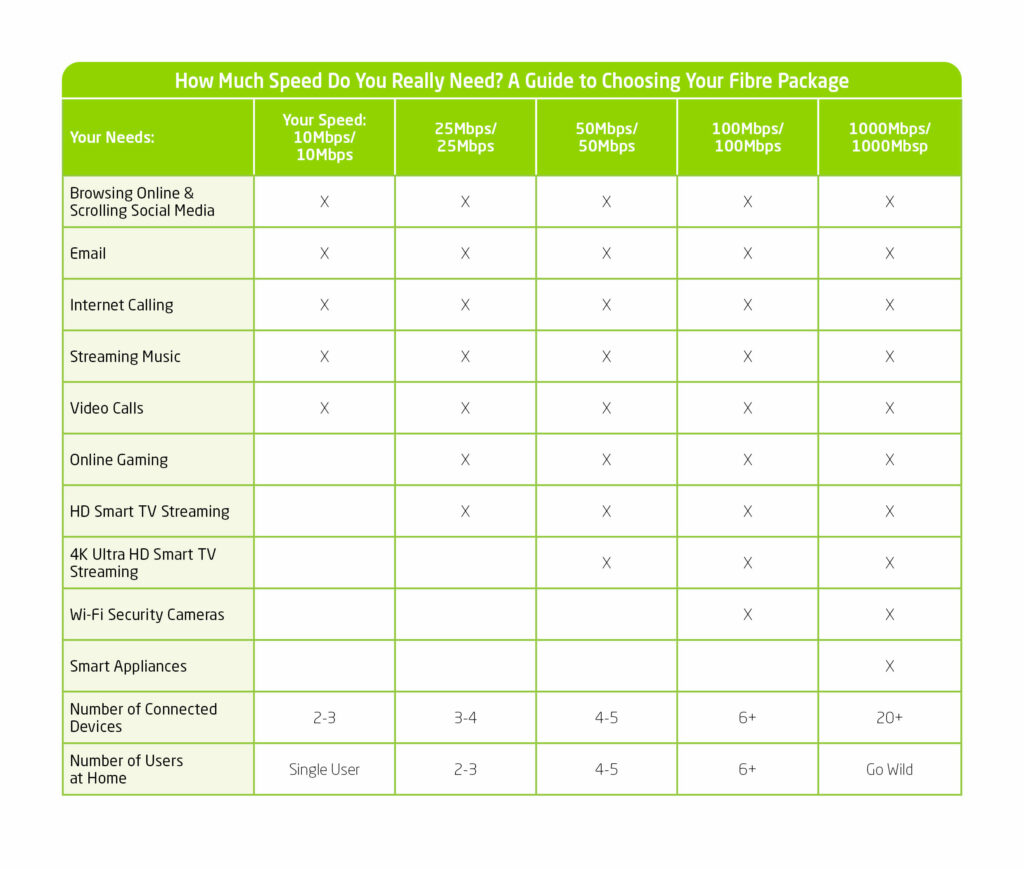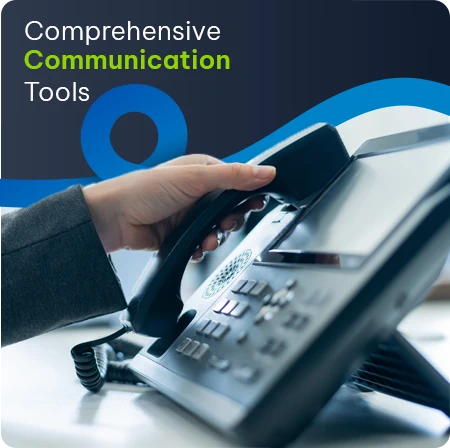Shop the latest Fibre deals
Having a Goldilocks moment when it comes to selecting your Fibre package? We’ll help you find the option that’s just right.
If you had to stop and think about it, it’s truly incredible how far we’ve come when it comes to having access to fast, reliable connectivity at home. With Fibre, the Internet basically travels at the speed of light. And it’s beautiful.
While we might not all have access to Fibre in our neighbourhoods right now (but believe us when we tell you, we’re working on it), those of us who do are spoilt for choice when it comes to speed selection – 1000Mbps for home use? That’s crazy fast!
But this much choice brings another dilemma: how much speed do you really need? And how can you be sure you’re not paying for a package you don’t use to the fullest?
We’re so glad you asked.
Unpacking the jargon
If you find yourself confusing broadband with bandwidth and always mixing up your upload with your download speeds, don’t worry, we’ve got you. Deciphering the tech speak is your first step in figuring out your Fibre needs.
- Broadband – the blanket term for all types of high-speed Internet. No prizes for guessing: Fibre is the fastest.
- Megabits per second – the amount of data (measured in bits) that moves between two devices in a second. The higher the number, the faster your speed.
- Bandwidth – the maximum amount of data your ISP allows you to send and receive per second at home.
- Throughput – the actual amount of data successfully sent and received by your connected devices at home. This is what a speed test will measure.
- Download Speed – how fast you can receive/download data – crucial for buffer-free Netflix binge sessions, streaming music and browsing the web. We list this number first.
- Upload Speed – how fast you can send/upload data – crucial for seamless video calls and online gaming. We list this second.
Checking all the boxes
For most of us, our Internet needs pre-pandemic were basic. We’d check our mails, stream a few movies, scroll through social media and maybe do some online shopping.
Once the pandemic struck and work from home protocols were put in place, we realised we’d need a lot more bandwidth just to make it through the month. In the past, where 10Mbps for downloads and 5Mbps for uploads for the average single person might have cut it, back-to-back video calls, online schooling and the need for upgraded Cloud storage quickly proved otherwise.
Suddenly, our upload speeds became a lot more important – especially when we needed to transfer large files to make deadline, get our kids into their virtual classes on time or make sure we didn’t freeze mid video call in the most unflattering, screen-shot worthy of ways.
So, where do you go from here? We’ve broken it down into a handy table below:

As we offer month-to-month contracts, there’s no need to panic if you feel you’ve underestimated your needs. That Fibre upgrade is only a simple click away.












